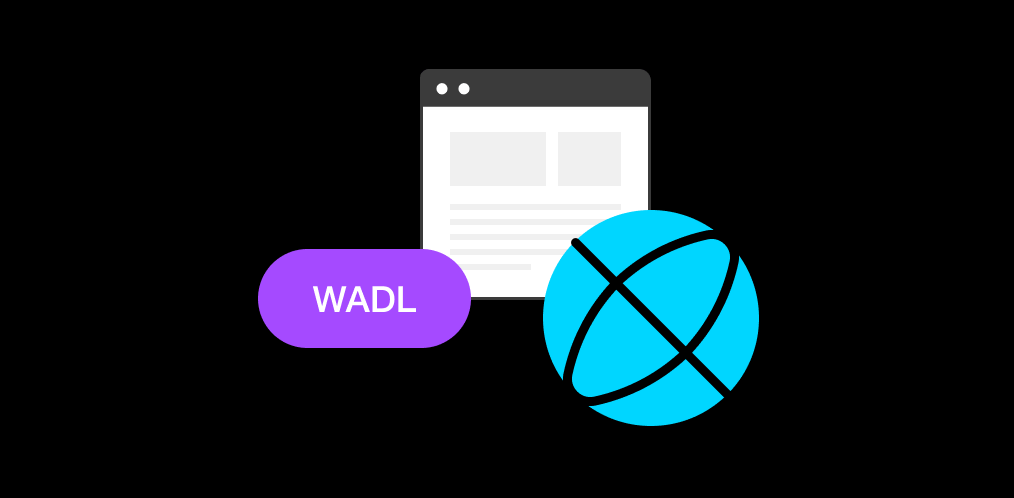
2023 OWASP API Security Top 10 Best Practices
After four long years since the original guidelines were created, the Open Web Application Security Project (OWASP) has now updated their Top 10…
{ "term_id": 297, "name": "John Natale", "slug": "john-natale", "term_group": 0, "term_taxonomy_id": 297, "taxonomy": "wpx-authors", "description": "", "parent": 0, "count": 31, "filter": "raw" }

Key Takeaways
In this article, we will explore the background, benefits, implementations, and comparison between WSDL and WADL. We will also discuss how WADL works in RESTful services. So if you’re looking for insights on how to create powerful web services using WADL, this article is for you!
WADL, or Web Application Description Language, is an XML-based code that outlines the functionalities of a web service. Its purpose is to establish a universal method for defining web services and their functions, much like how WSDL defines SOAP services. By using WADL, programmers can generate a computer-readable definition of a web service and its operations. This enables the creation of client applications that can effectively communicate with the web service.
The WADL specification, as defined by the W3C, is an open standard that can be utilized by any program that can consume XML documents. This allows developers to incorporate WADL into their development endeavors, regardless of the programming language or platform they are working with.
Aside from defining a web service in a way that can be read by machines, WADL also has several other benefits compared to traditional methods like SOAP or RESTful services. For instance, the use of XML for encoding data allows for quicker development and more uniformity across various software projects. Additionally, as an open standard, developers are not restricted to using proprietary formats or APIs for their client applications, giving them more flexibility in finding the optimal solution for their project needs.

WADL is a highly valuable resource for web development, enabling developers to quickly build powerful and streamlined applications. Its simple syntax is easily grasped by both beginners and seasoned professionals. Additionally, its adaptable design allows for personalized adjustments to suit the requirements of any project.
In addition to facilitating developers in efficiently comparing various versions of web services, WADL offers a distinct method in comparison to other standards such as SOAP or RESTful services. This approach does not entail any additional coding after creating the description, nor does it require complicated configurations before usage. As a result, developers concentrate on constructing efficient client applications that can effortlessly integrate with current systems.
WADL’s ease of use has made it a favorite among developers seeking a streamlined method for documenting web services in a format that can be easily interpreted by machines. With the use of this language, developers can swiftly create interactive interfaces and enhance the user experience for clients who interact with their web service. Furthermore, its adaptability allows for adjustments to be made at any stage of development to meet any unique demands that may arise during the creation of an application.
Making a WADL document is a simple task that can be done with little difficulty. The initial step in creating a WADL document is to construct the XML structure and syntax. It is crucial to verify that these elements are correct, as this will determine if it can be comprehended by clients.
After completing the XML structure and syntax, the document must be supplemented with elements for it to be recognized by clients. These elements encompass details about the web service operations, such as the parameters used in requests or responses, formats of requests and responses, and the HTTP methods employed for communication between client applications and the web service. Additionally, it is important to include documentation for each operation featured in the application, as this will aid developers in comprehending the functionality of the web service.
After all the components have been incorporated into the WADL document, it must be checked against a relevant XSD file. This process verifies that the information in the document meets the predetermined criteria set by clients. If any errors are identified during validation, they must be fixed before proceeding with the development.
Developers can guarantee smooth and efficient interactions between their applications and web services within their system architecture by adhering to these guidelines for creating a WADL document. This method not only saves development time, but also promotes uniformity across various software projects.
XML-based languages such as WSDL and WADL are utilized to outline the functionalities of web services. While WSDL is primarily employed for SOAP-based services, WADL is commonly used to describe the parameters of RESTful services. Unlike WSDL, which specifies the format of a SOAP API, WADL is suitable for outlining the structure of a RESTful API.
A key distinction between WSDL and WADL is their choice of language: WSDL primarily utilizes XML to define web services, while WADL opts for JSON. This can impact the way developers build their applications and handle security measures such as authentication and authorization. Moreover, although both standards provide similar capabilities for outlining web service operations, they vary in terms of syntax and data organization.
When faced with the decision between using WSDL or WADL for your application development, it is important to thoroughly assess your project’s requirements before making a choice. Factors such as the preferred language (XML vs JSON) and security features should be considered when determining which standard best suits your needs. Despite the decision, both standards are effective tools that can efficiently generate code for both client-side and server-side applications with minimal effort from the developer.
Today, developers across various platforms are utilizing WADL in numerous ways. WADL has gained significant support from popular frameworks like Apache CXF, Apache Axis2, and Apache Wink. These frameworks offer a convenient feature for developers to automatically generate client-side code in languages like Java or JavaScript. Furthermore, while WADL has limited support in the .NET platform, it has comprehensive support in Oracle Application Server 10g and IBM WebSphere 7.
Utilizing WADL to produce code can be a effective approach for constructing web services that are dependable and protected. This eliminates the necessity for developers to manually write code from the beginning; instead, they can utilize the WADL file to swiftly and precisely generate client-side code. Additionally, it promotes uniformity among various software projects, as developers can access a document outlining the capabilities of the web service without needing to understand its underlying technologies or protocols.
Experience the speed, scale, and security that only Noname can provide. You’ll never look at APIs the same way again.